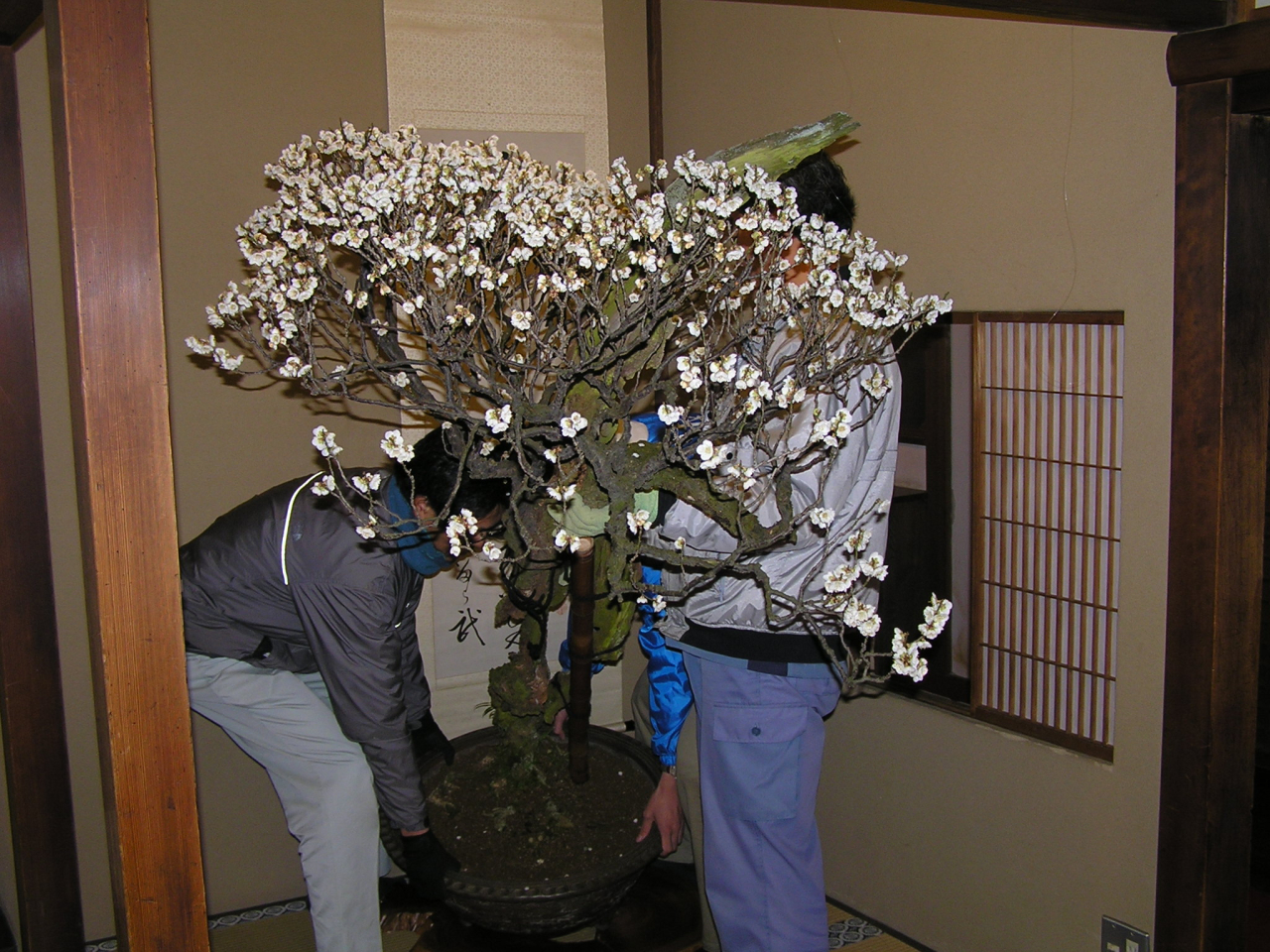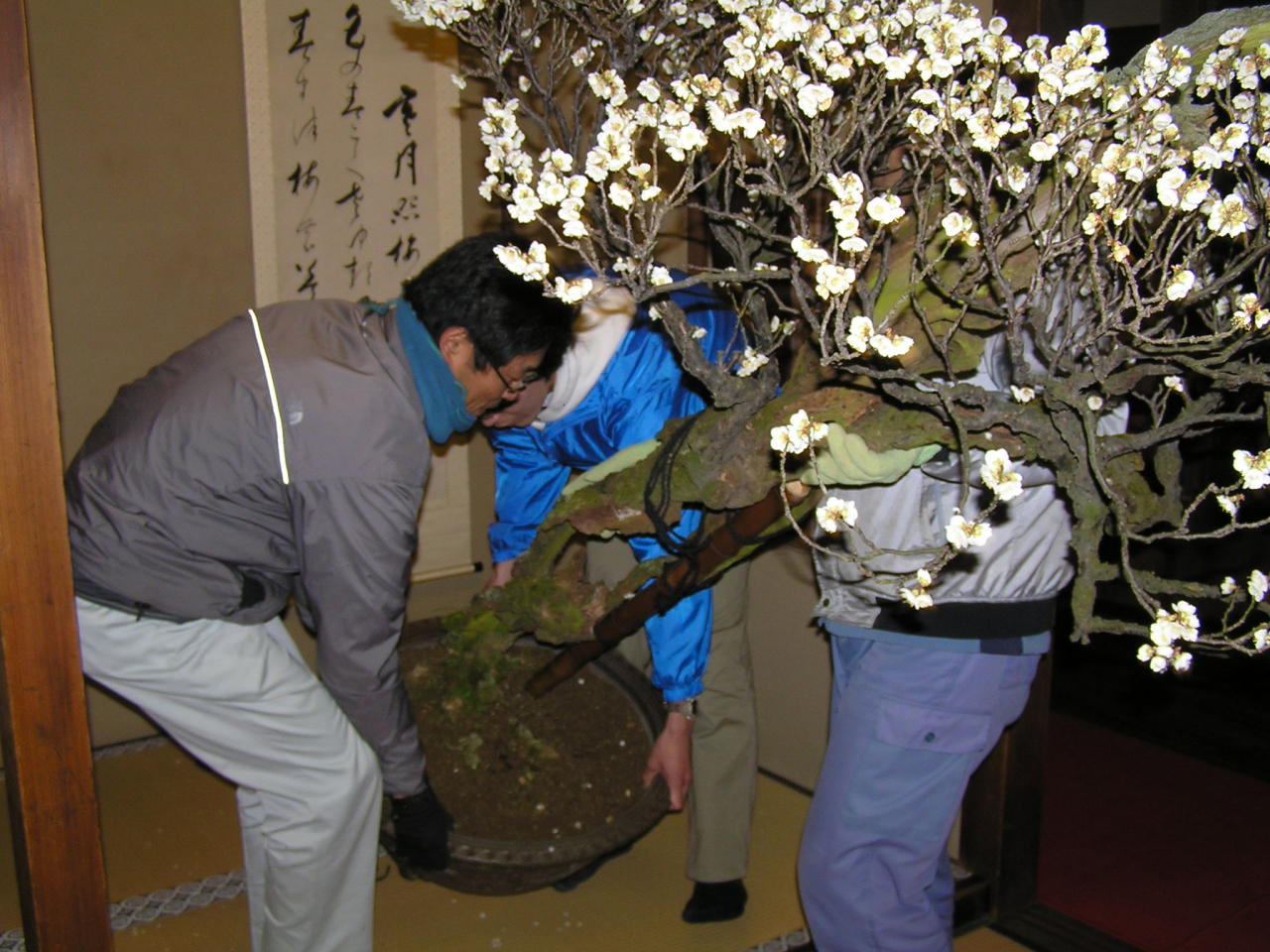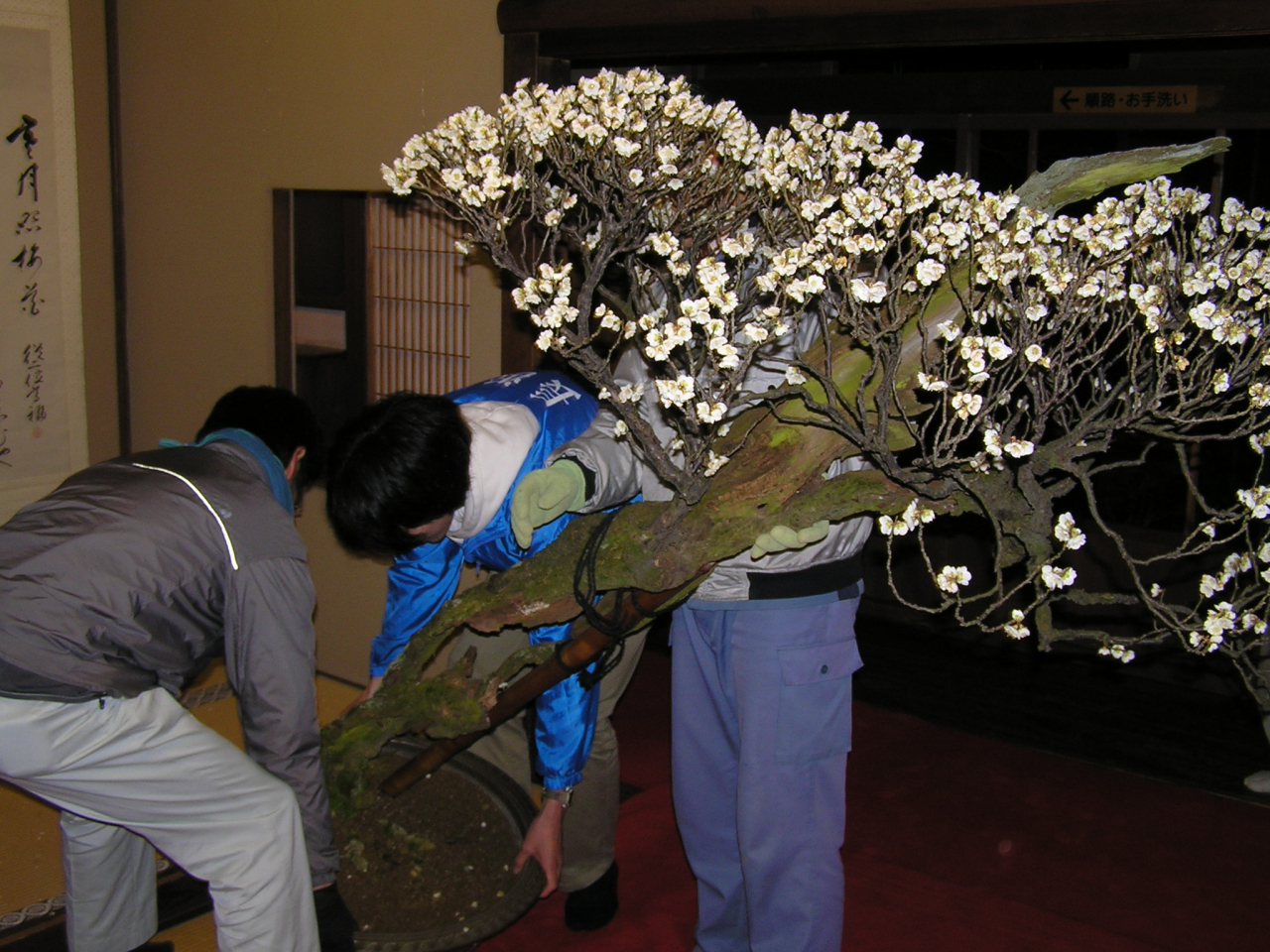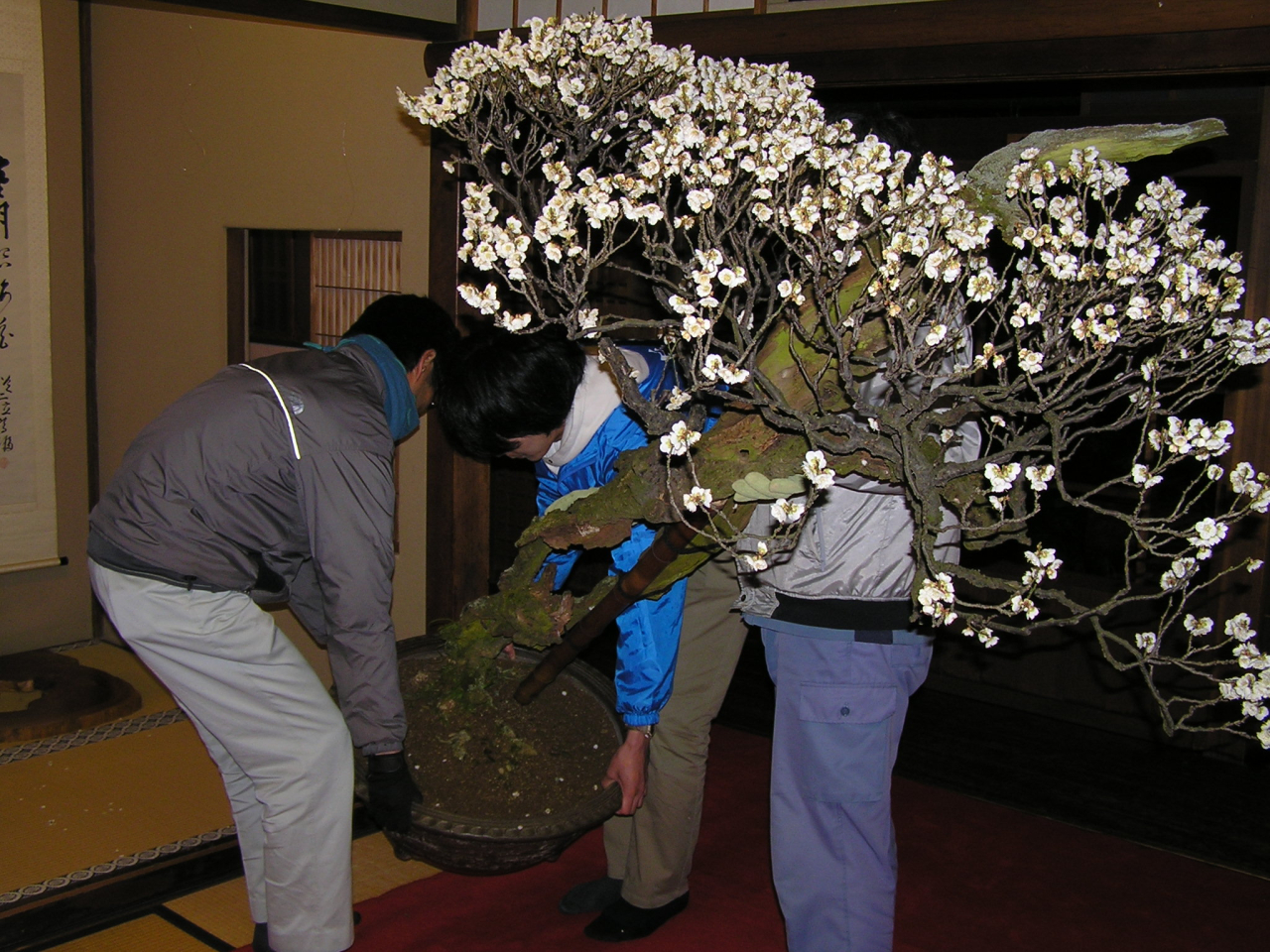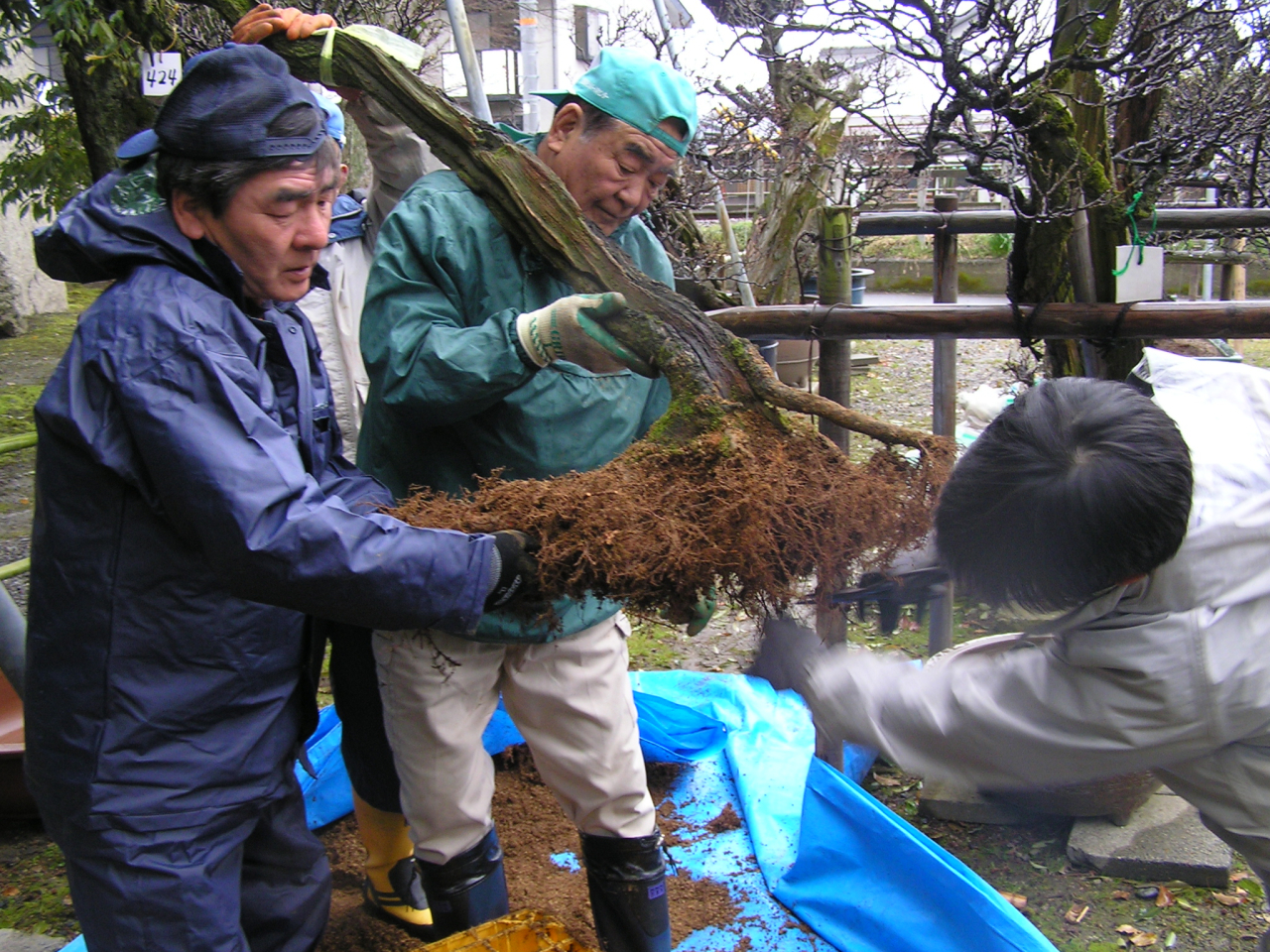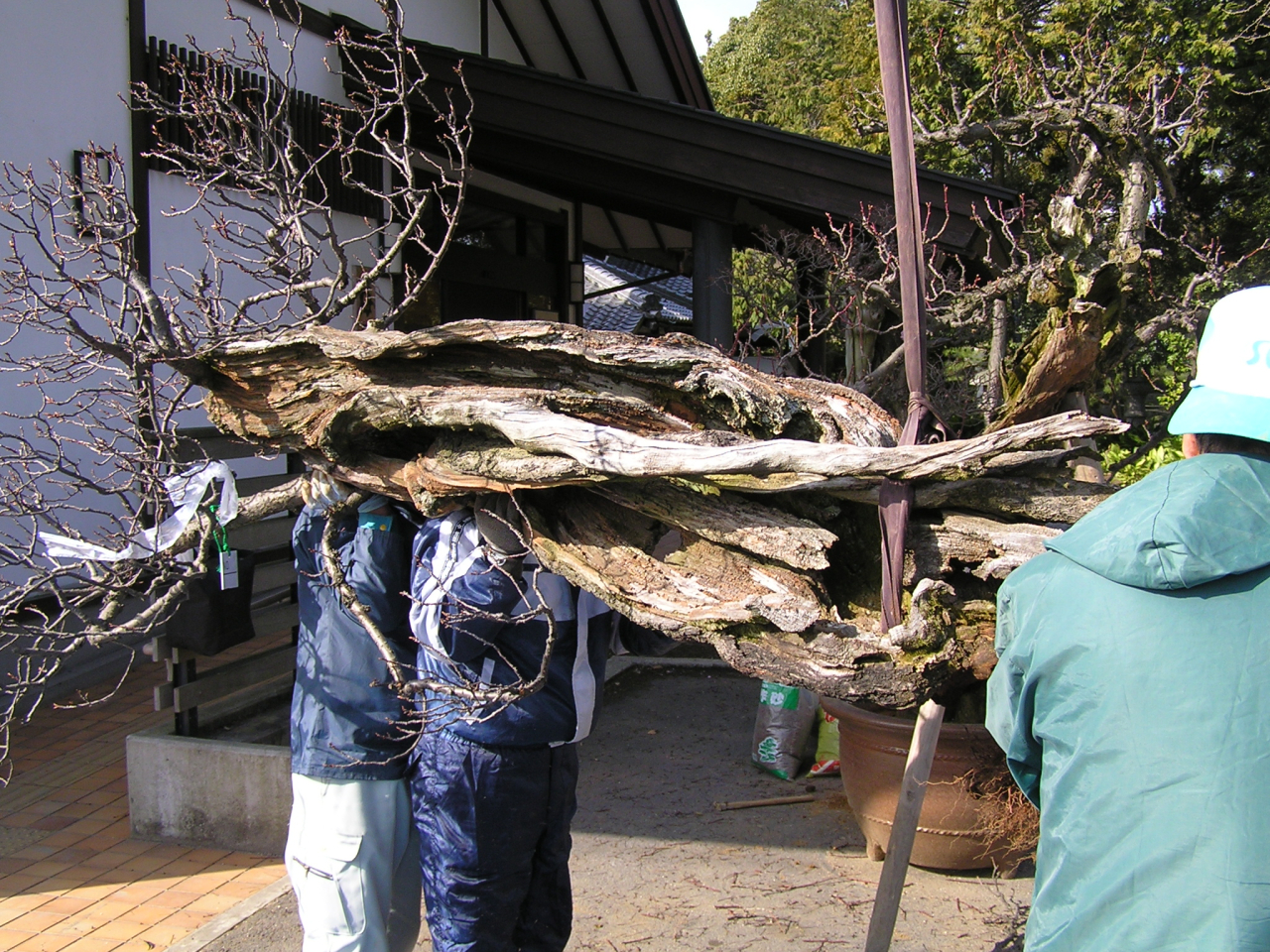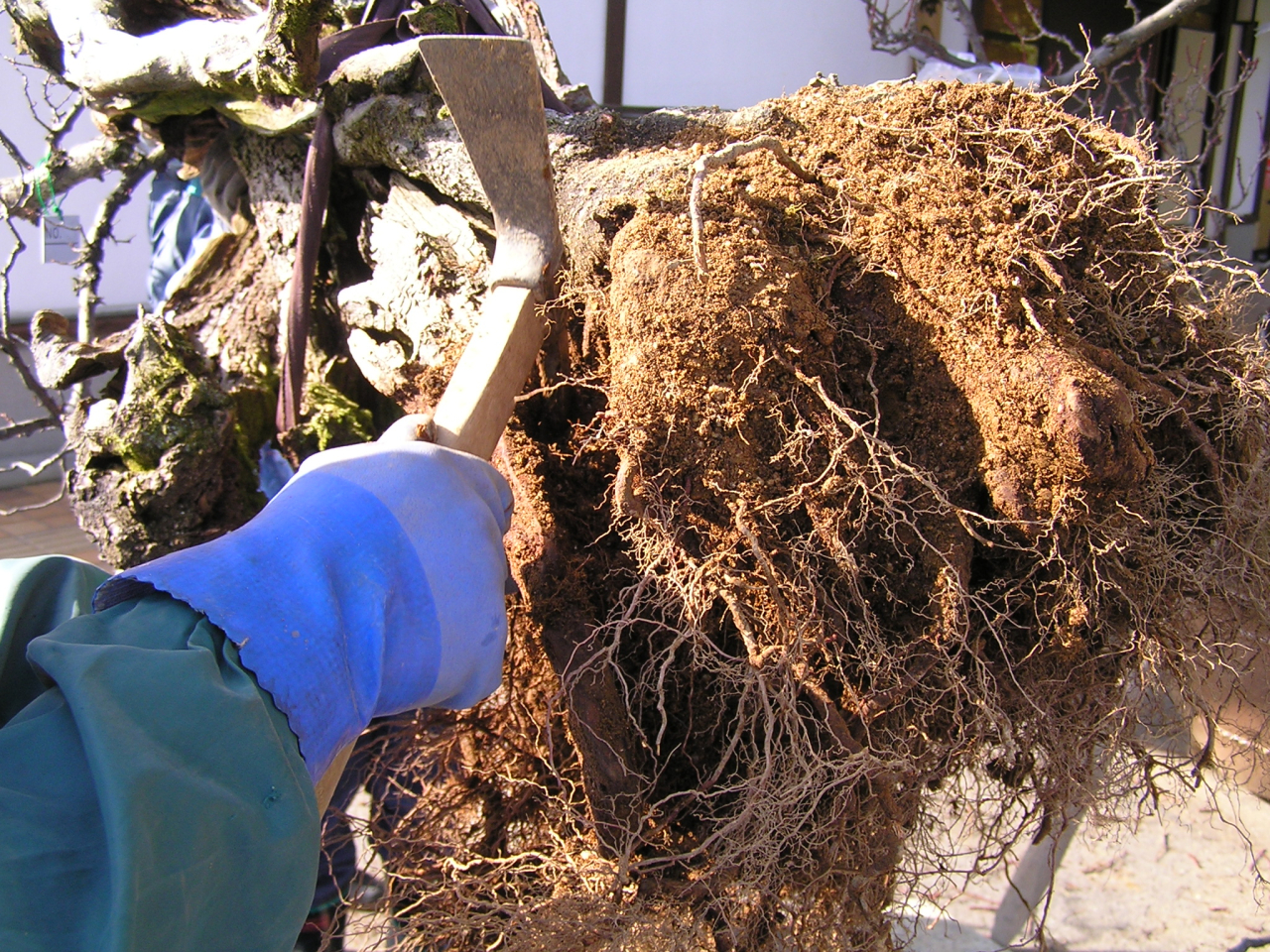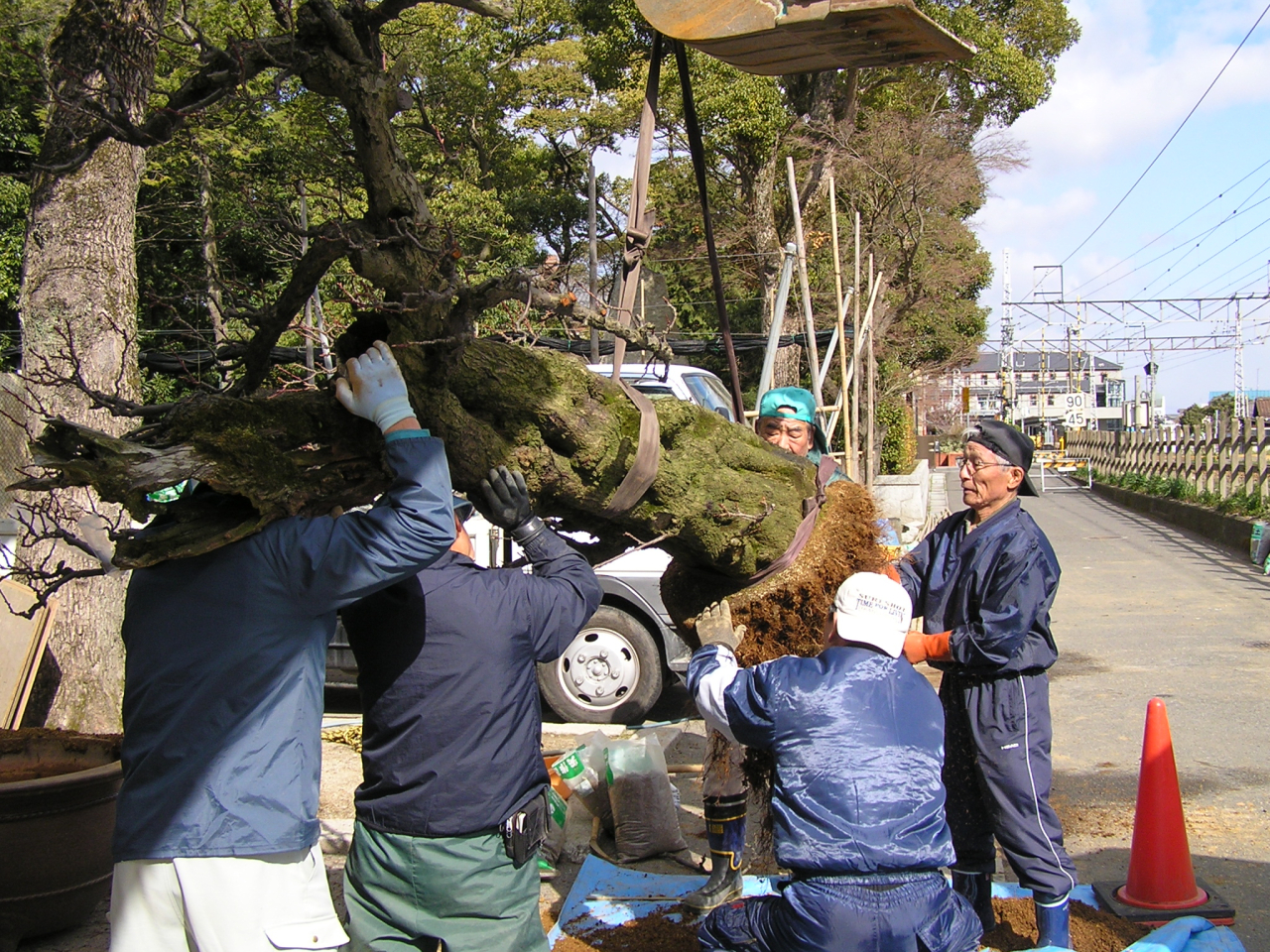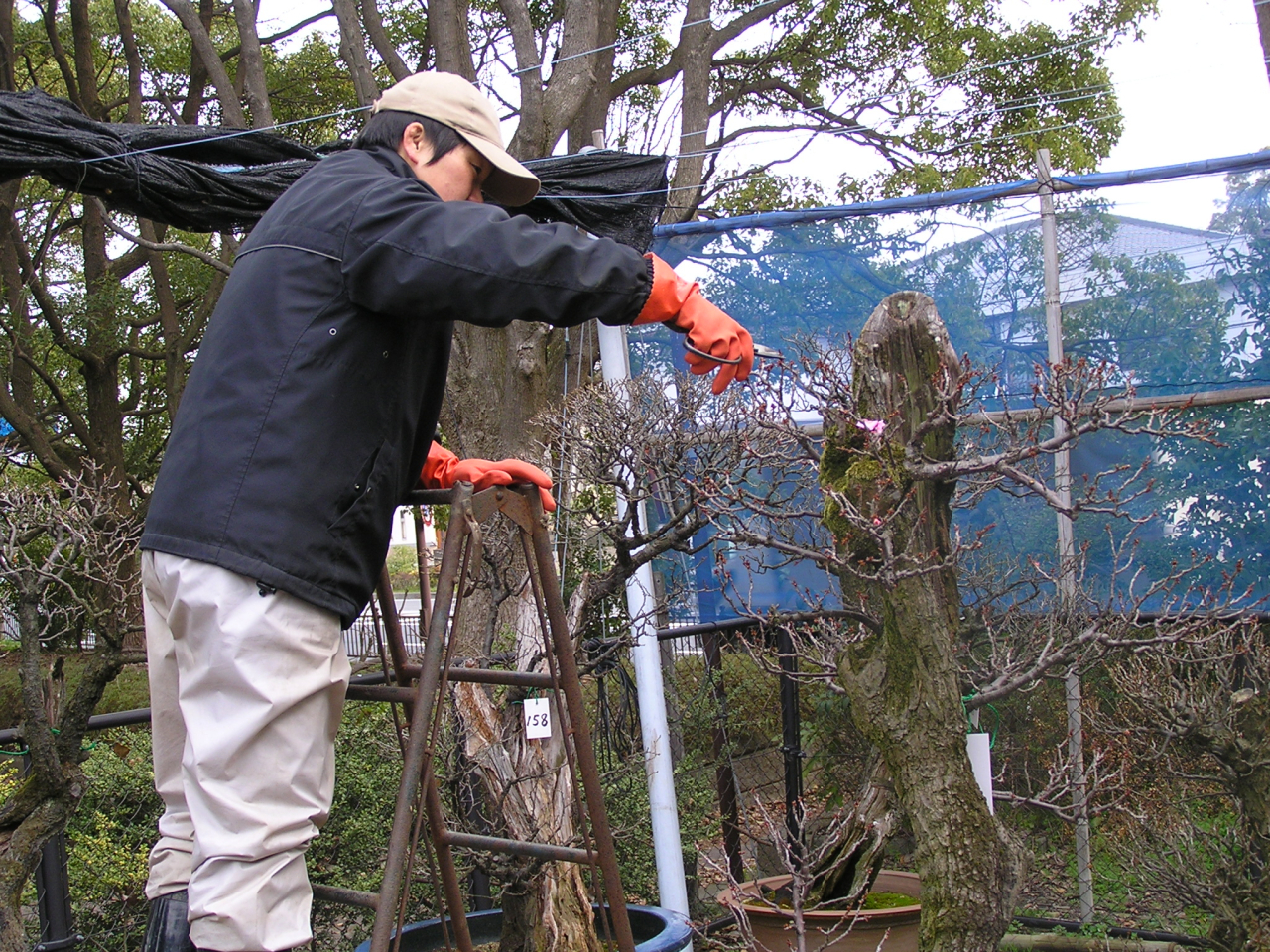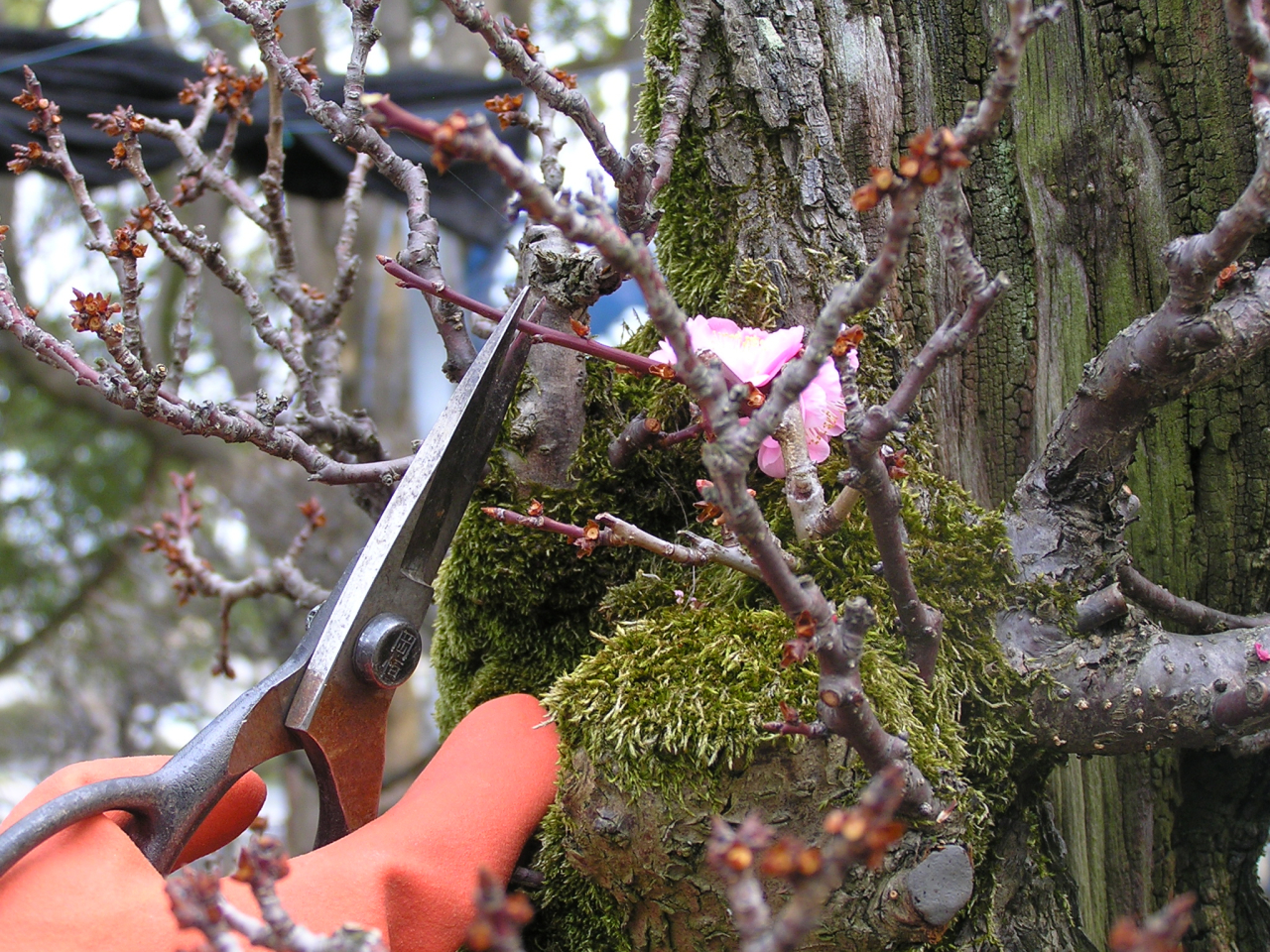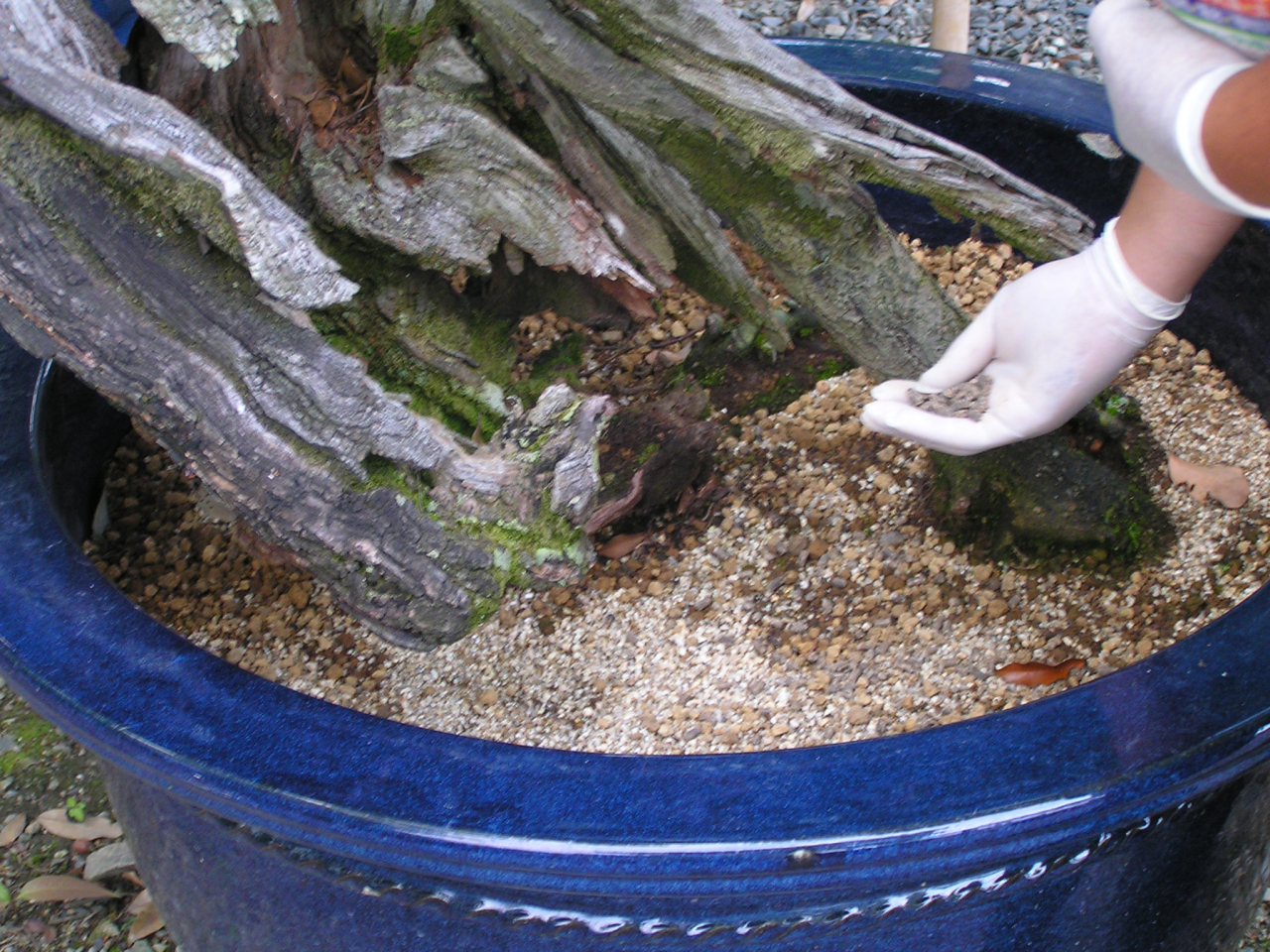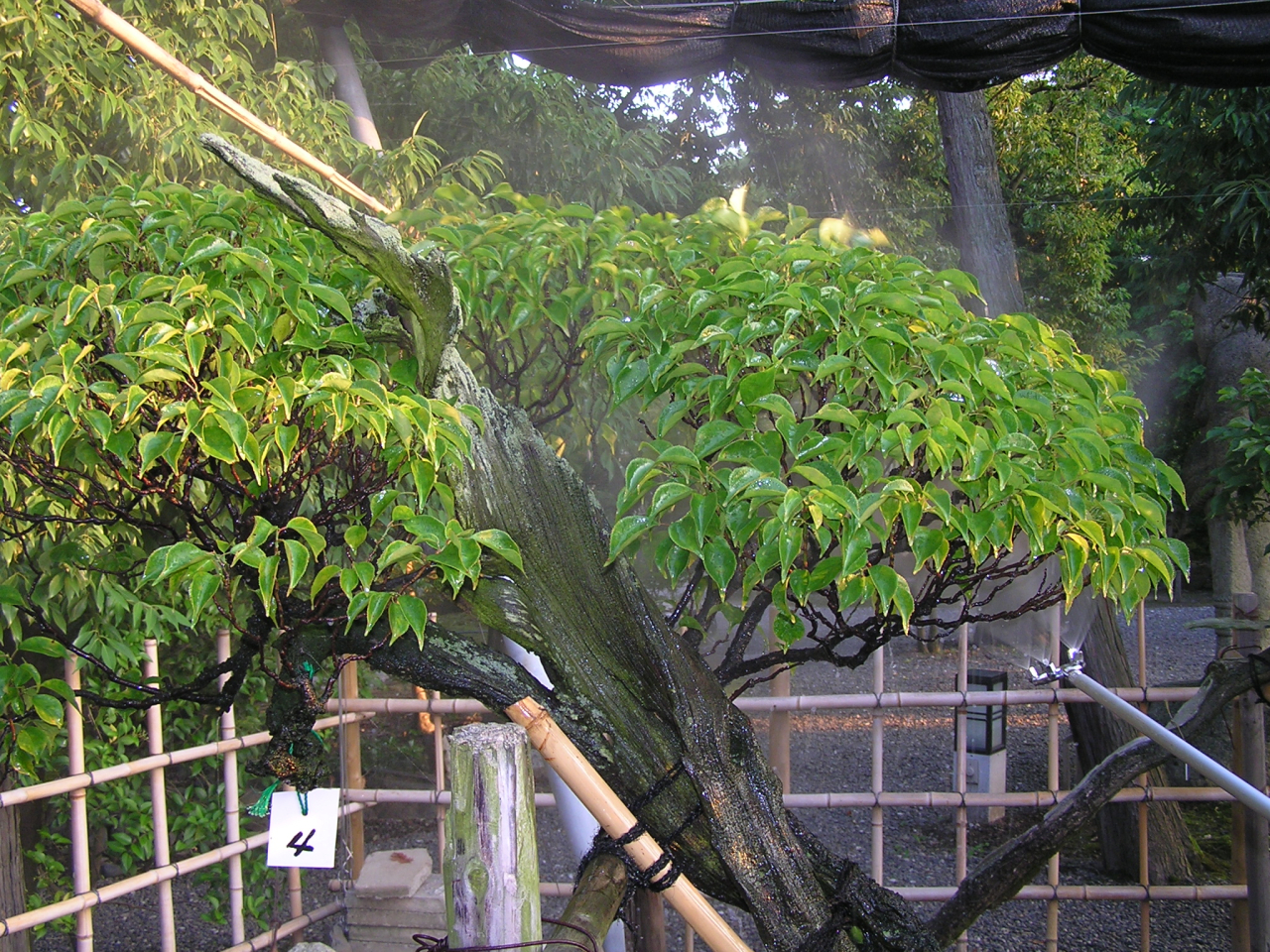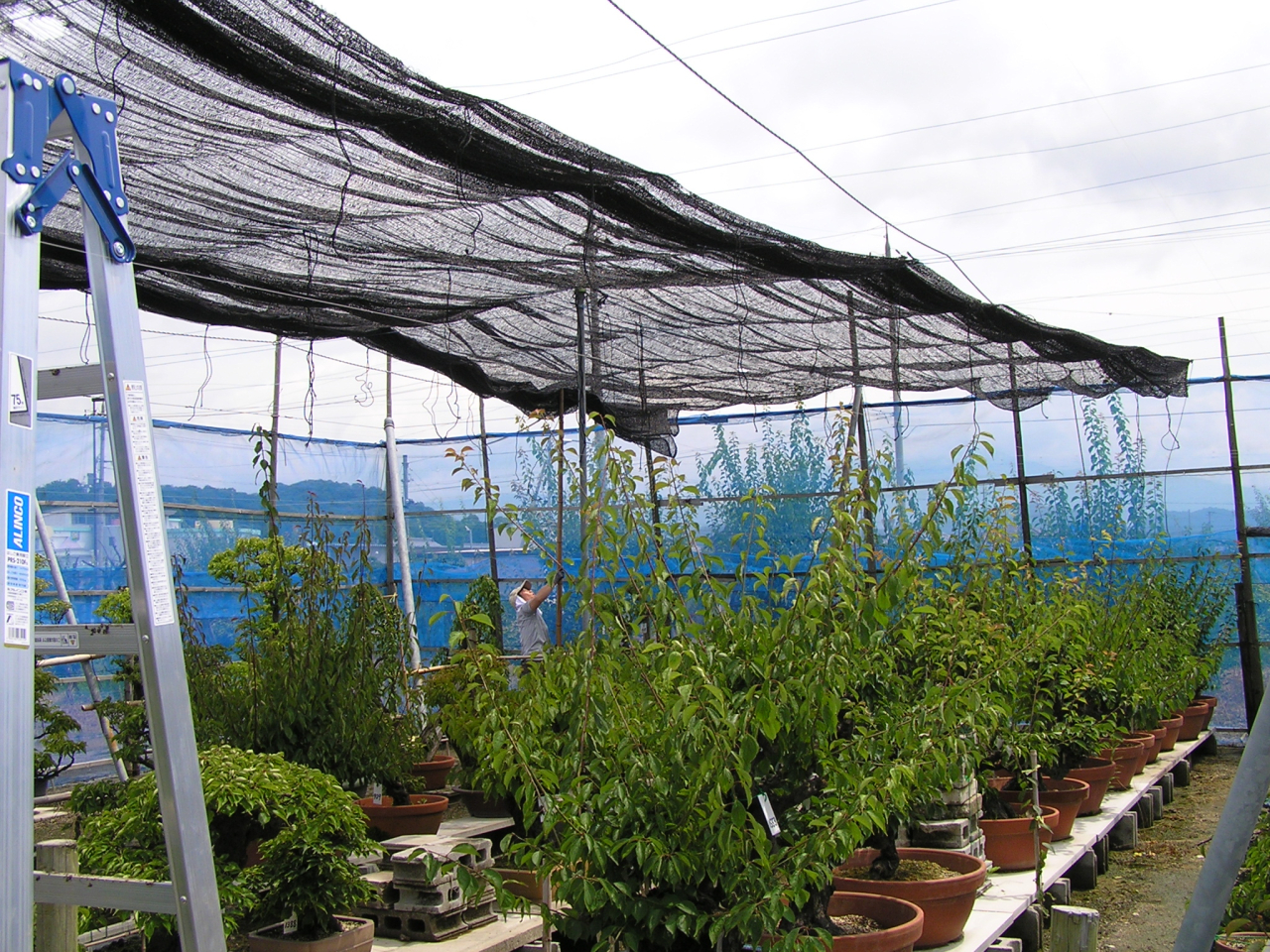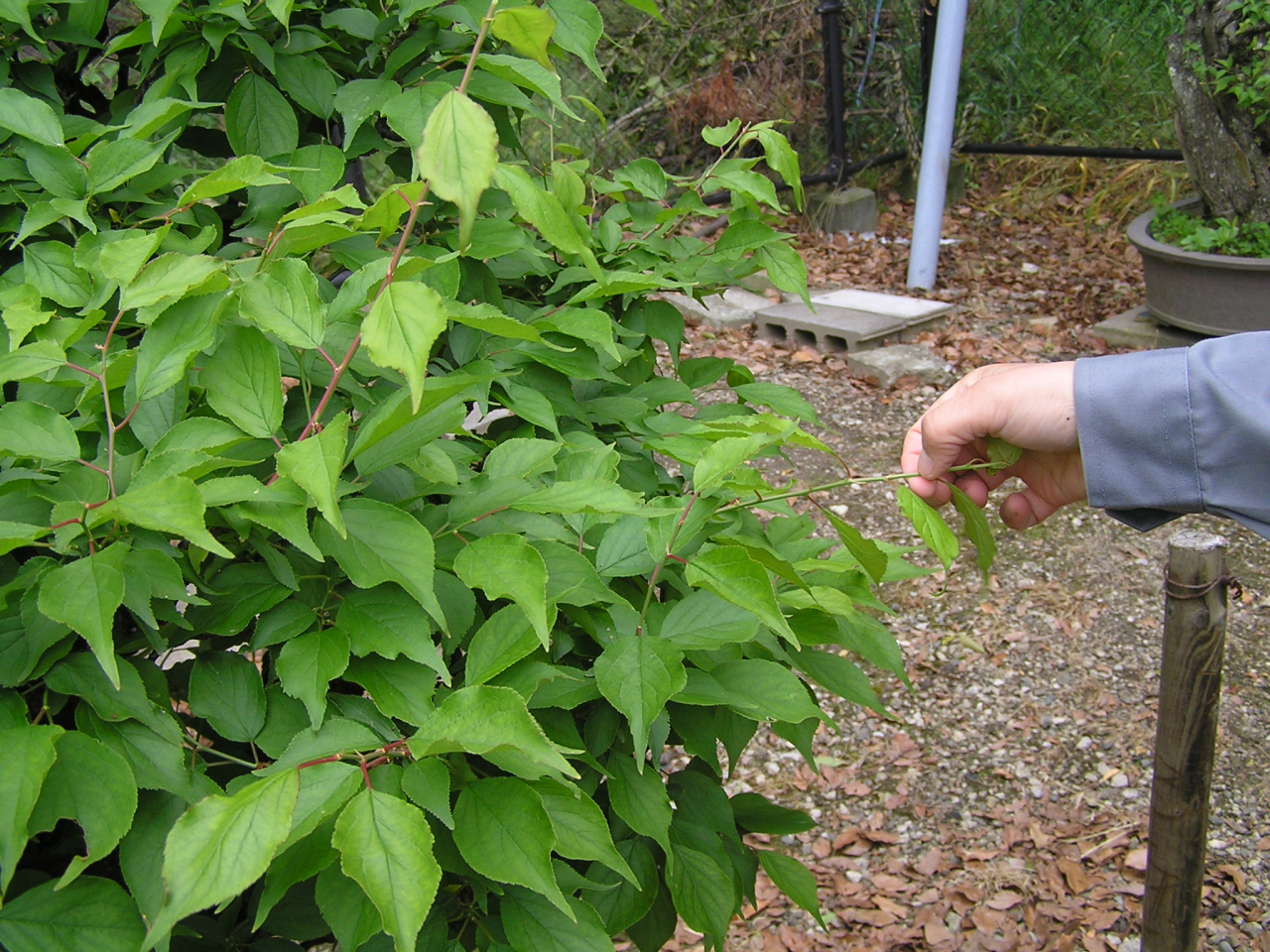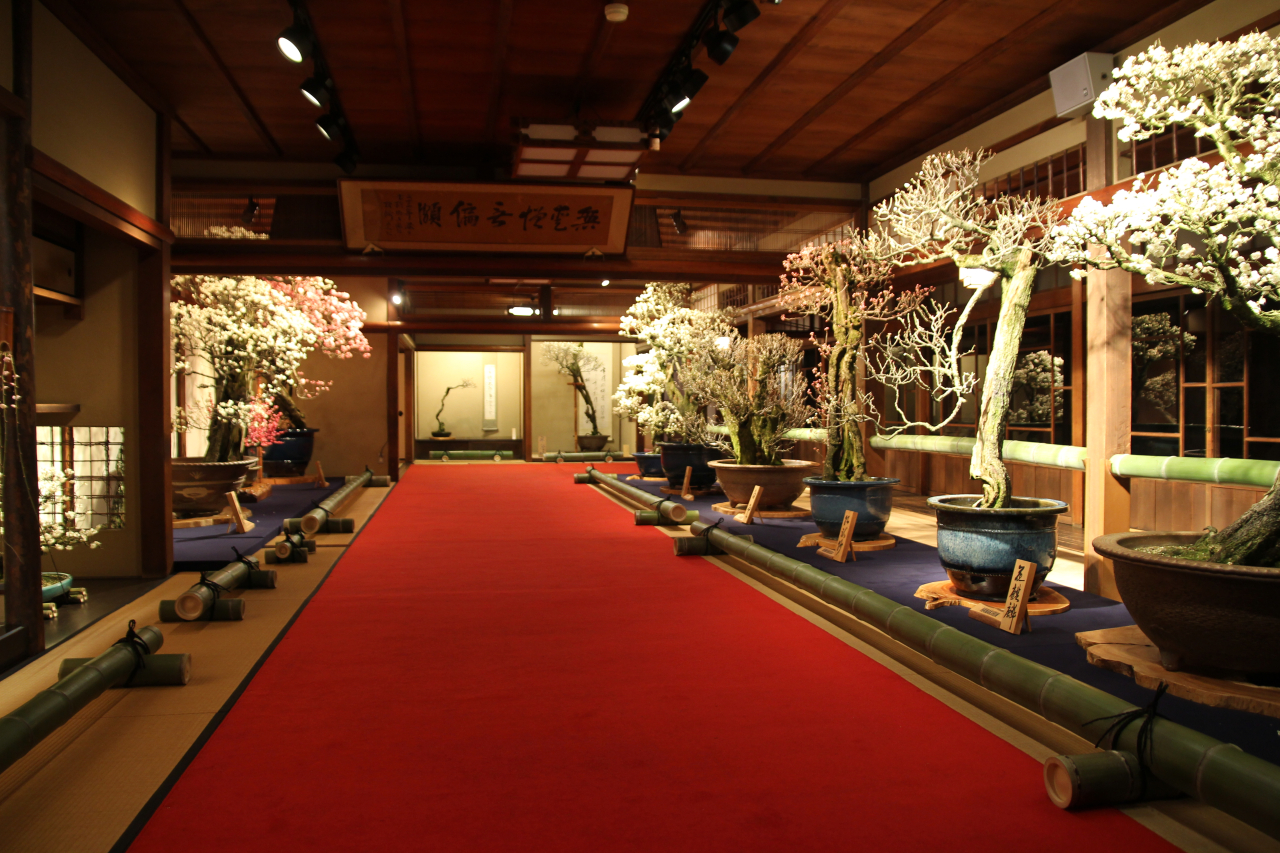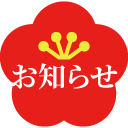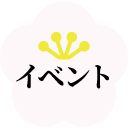Plum Bonsai management
A year of Plum Bonsai management
There are approximately 300 potted Bonbai trees in Nagahama, and nearly 2,000 if you include those planted in the ground.
They are managed by Bonbai experts throughout the year, but raising them requires warm love and strict management, just like raising your own child. You only get to see Bonbai for two months out of the year.
However, from the moment the flowers finish blooming, essential care begins that is invisible to everyone in preparation for next year's event.


Plum Bonsai removal
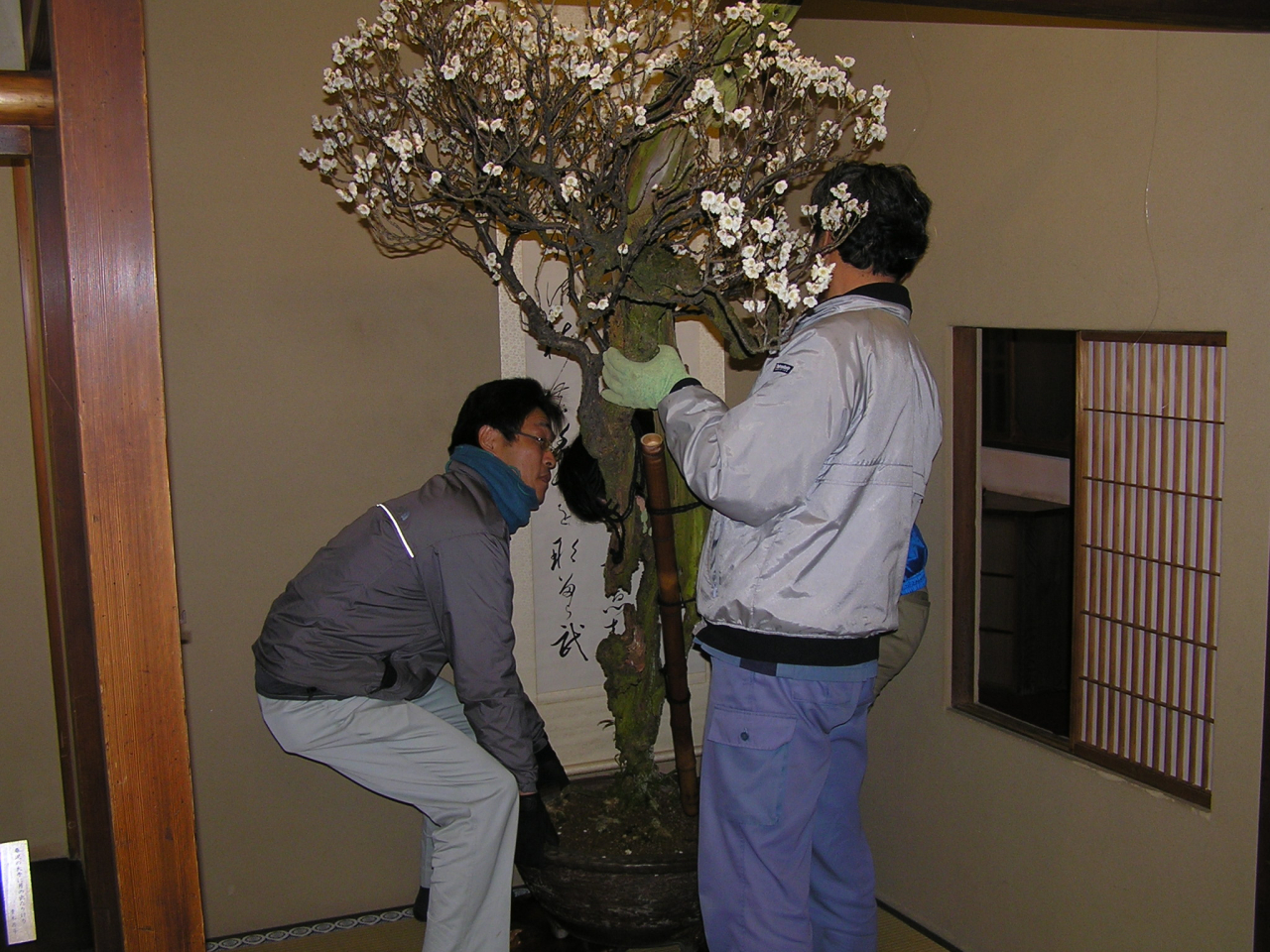
Once the Bonbai exhibition is over, the exhibits will be carefully reinforced with bamboo and rope and removed. Weighing over 800 kg, it is a huge task that requires 15 people to prepare the Plum Bonsai trees. Once removed, the Bonbai will be transported to four managed farms in Nagahama City.
Replanting/transplanting
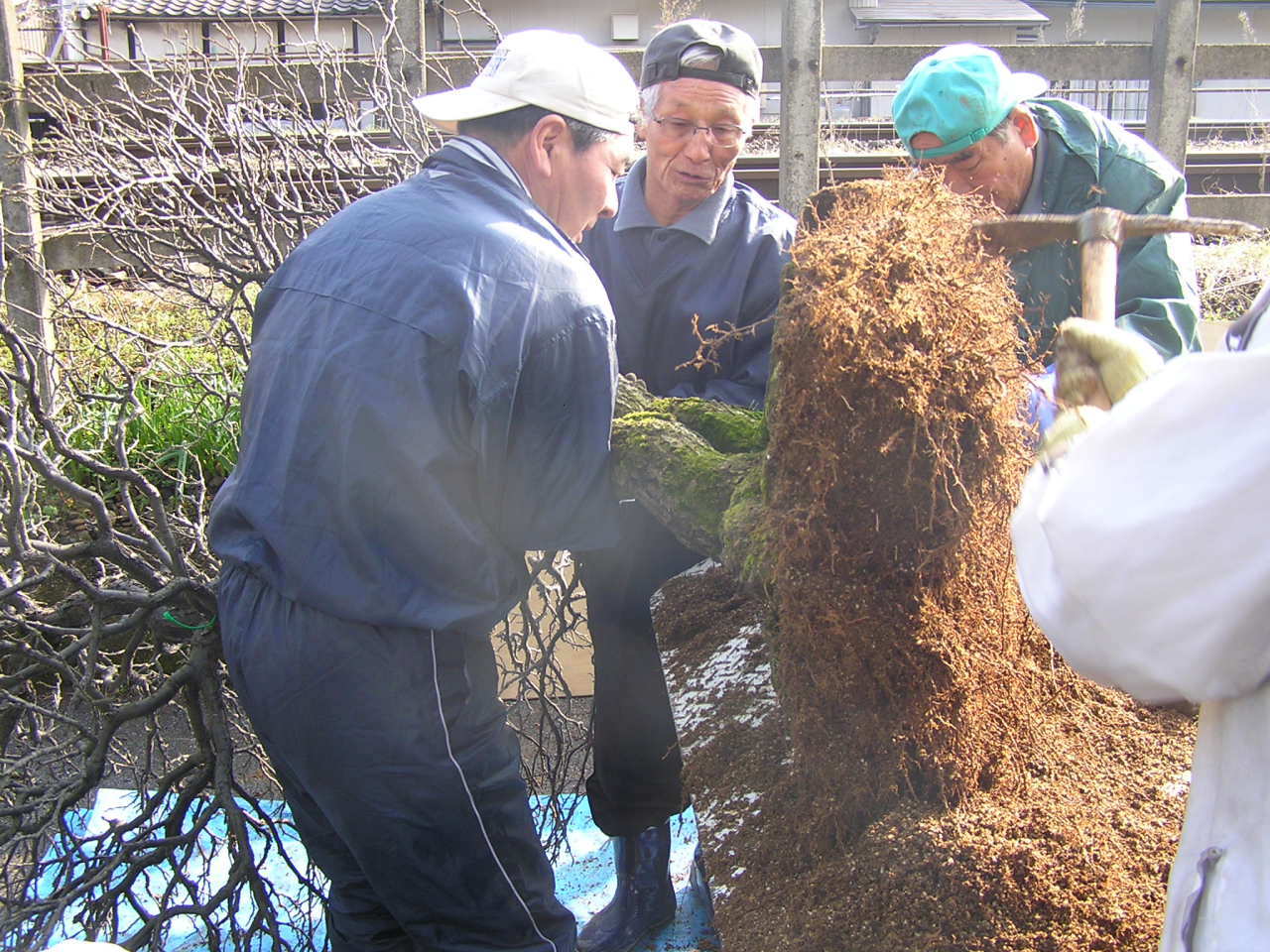
Customers sometimes ask, ``When the Bonbai flowers are displayed, are they returned to the fields for maintenance?'' It is true that when the tree weakens and it gains strength, it is sometimes planted in the ground, but basically it is kept in a pot all year round.
Bonbai are kept in pots throughout the year, but are replanted in late March. It occurs approximately once every three years, and the timing is determined by examining the characteristics of each Bonmei tree. The soil used for bonbai must meet difficult conditions: it has good water retention, good drainage, and good fertilizer retention. This is a difficult point, such as the combination of red balls and sand, and the combination of large and small sand.
Transplanting is also an important task. It takes about 10 to 20 years for the approximately 1,700 plum trees planted in the ground to make their debut as Bon plums. Transplant once every 3 to 5 years to shrink the roots and prepare for potting. The work will take place from the end of November, when the leaves fall, until February, when the roots begin to move.
Some of the plum trees we manage are young trees that are two or three years old. Considering the 100 years ahead of the Bonbai Exhibition, we are managing it on a daily basis, although we do not know when we will be able to display it.
pruning
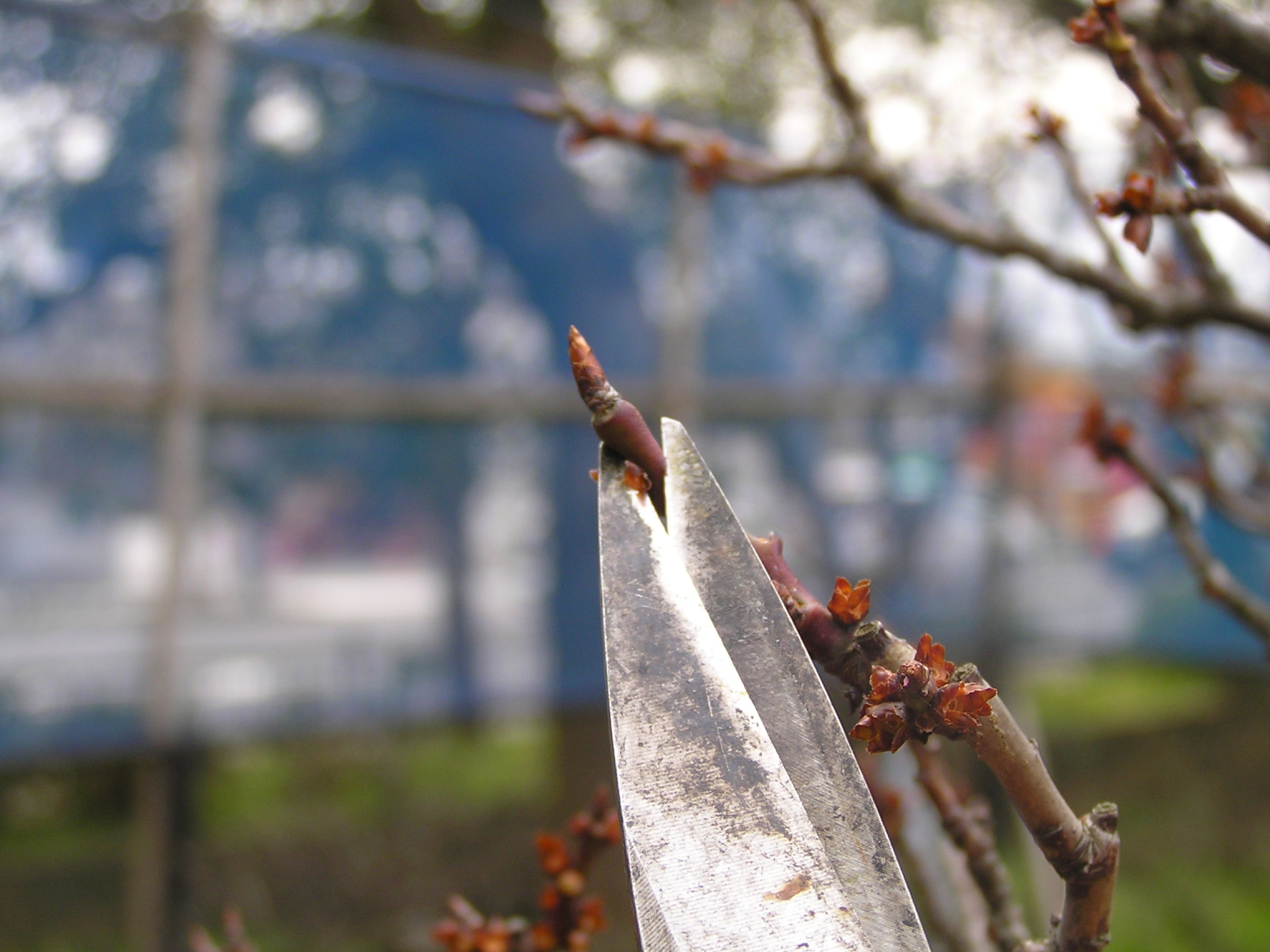
Plum blossoms bloom on the branches that grow in April. The following year, they will not bloom on the previous year's branches. If you leave it as it is after it has finished blooming, new buds will appear but the shape of the tree will collapse. Pruning is an essential task to maintain a beautiful shape. The method is to cut off the base of the branch, leaving two spots where the flowers were blooming. At the Bon Plum Exhibition, pruning work is carried out from time to time after the Bon Plum blossoms have been exhibited.
Fertilizer
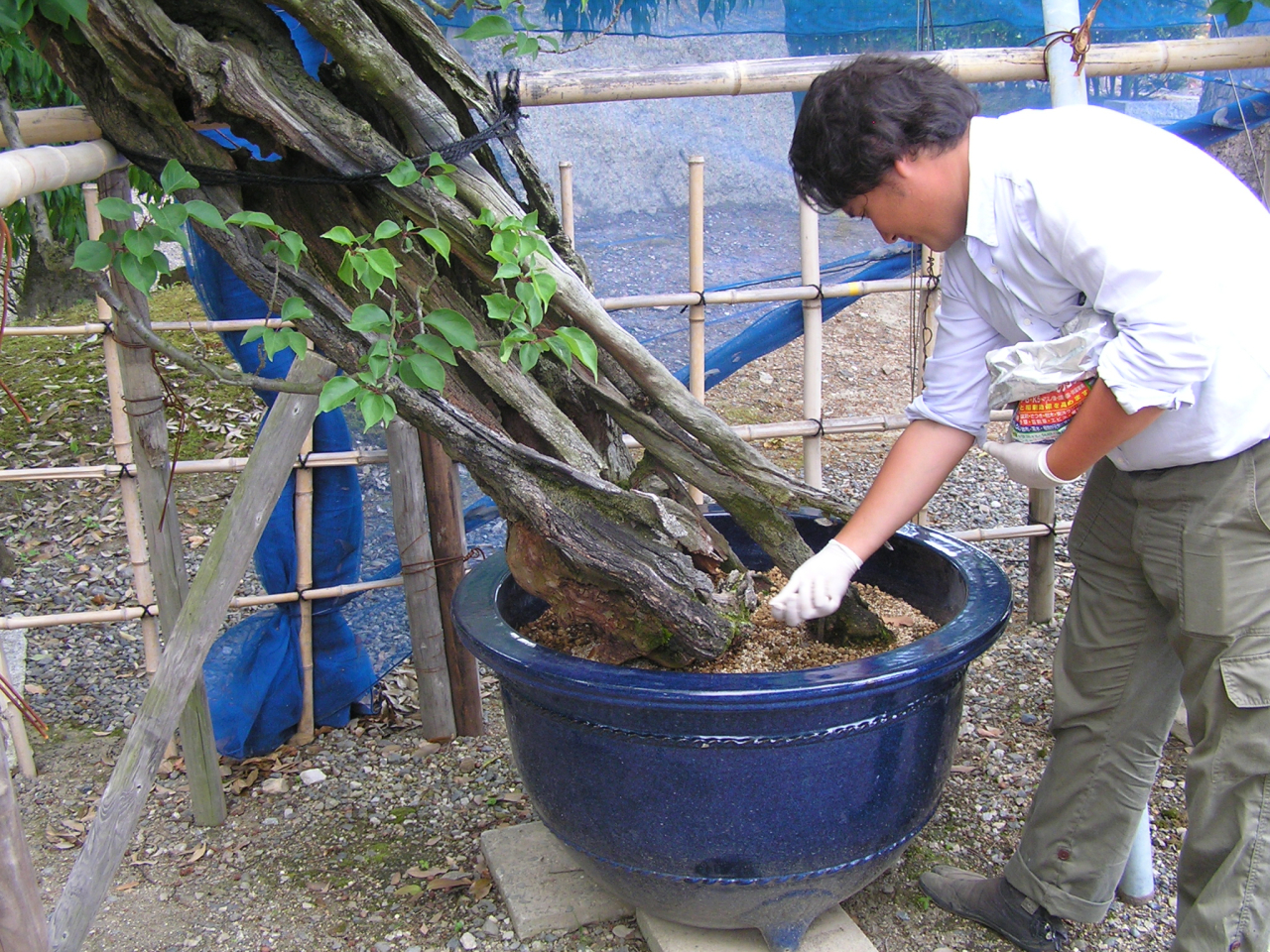
Plums are plants that require fertilizer. Apply fertilizer containing nitrogen, phosphoric acid, and potassium once a month, five times in total from April to June, September, and October. In order for a tree to bloom beautifully, it must accumulate sufficient strength. For this reason, we provide sufficient nutrition throughout the year.
disinfection
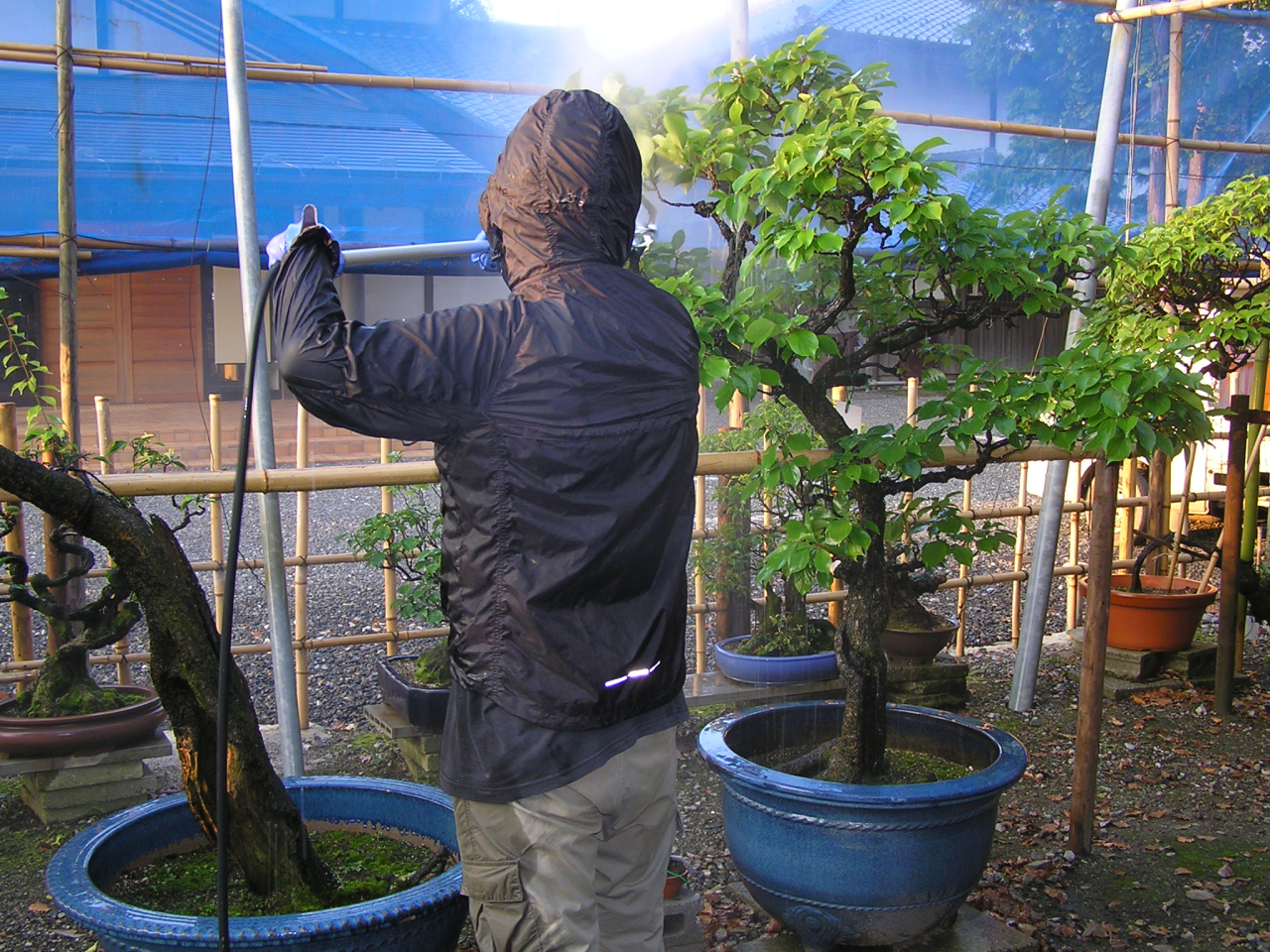
Preventive disinfection once a month is essential. Furthermore, each leaf is observed, and if pests or diseases are found, insecticides and fungicides are sprayed.
In order to ensure that even if an infectious disease were to occur, it would not affect the holding of the Bonbai Exhibition, the Bonbai farms are divided into four locations.
gauze hanging

Trees are protected with nets from April to May to protect the new shoots from late frosts, and from the end of the rainy season in July to September to protect the trees from direct sunlight.
Bud picking

This involves trimming the new branches that have grown after flowering to an appropriate length. When the sprouts have grown to about 15 cm (about 10 leaves), use your fingernails to pinch off the tips of the new shoots. During this period, the shape of the bonbai is roughly adjusted.
watering

I usually water in the morning. However, in the summer, the leaves are watered twice, once in the morning and once in the afternoon, and sometimes in the evening to prevent the leaves from burning when the temperature is high. In winter, it is done once every two or three days, but the amount should be determined while checking the condition of the Bonbai. Basic watering is the most important and difficult task.
Appearance adjustment
As soon as the Bonbai leaves fall, the work to reshape them begins. Cut off unnecessary branches, adjust the shape and prepare for display.
Transporting Plum Bonsai to the Exhibition

In preparation for the Nagahama Plum Bonsai Exhibition, the trees must be moved into the Keiunkan guesthouse beginning in mid-December.
Bonsai trees are typically small enough to be moved fairly easily. The plums at the exhibition, however, reach heights of over 2 meters and can weigh as much as 800 kilograms when combined with their planters, which themselves can weigh as much as 100 kilograms. Normally, moving objects of that size and mass would require heavy machinery. However, due to the trees’ age, their fragility, and a need to protect the heritage architecture of Keiunkan, the trees are lifted and moved manually. Some trees are light enough to be carried by a single person, but the largest and heaviest require as many as 15 people.
First, the especially heavy or delicate trees are reinforced with bamboo and ropes. Then, they are lifted or maneuvered onto carts to help transport them safely. The trees are next loaded onto trucks to be taken to Keiunkan. Once at the venue, the trees must be transported with great care to avoid hitting the walls or ceiling of the guesthouse.
Even when all the trees are in place for the exhibition, the work continues. Trees are swapped in and out depending on their blossoming cycles. Trees that are no longer flowering are replaced with trees that have just bloomed. As each new tree comes in, the atmosphere of the exhibition changes. Visitors who see the display more than once during the exhibition period will delight in these many variations in the beauty of plum bonsai.
During the Plum Bonsai exhibition period

During the Plum Bonsai Exhibition period, visitors are busy watering the exhibits, controlling temperature and humidity, replacing the Plum Bonsai trees, and pruning those that have finished blooming. However, when the beautiful flowers bloom and the scent of plum blossoms fills the venue, the year's hard work is rewarded.
Looking for old trees
In his spare time from maintenance work, he travels east and west in search of old and giant plum trees that have wabi and rust. Neighbors and visitors to the Bon Plum Exhibition often ask if they would like to use the plum trees they have at home for the Bon Plum Exhibition, so we go there to check on the condition of the plum trees, dig them up, and plant them in our managed fields. . This is to make Japan's No. 1 Bonbai exhibition even more worth seeing.

